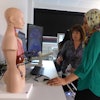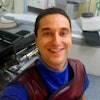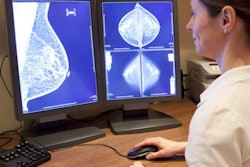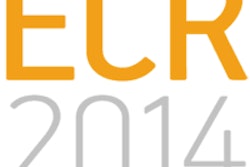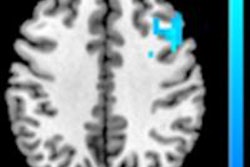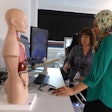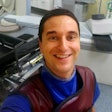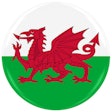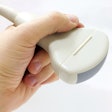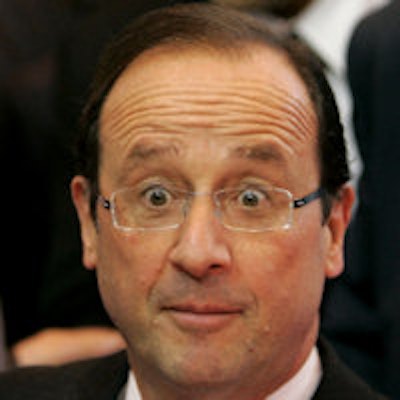
The French Society of Radiology (SFR) has issued a strong warning about the dangers of limits on the number of radiology trainees being imposed by the government of President François Hollande. Over the next five years, 1,114 residents will be trained, but the SFR and others think 1,300 or more will be needed to maintain care.
 President François Hollande's government has pegged back the number of radiologists entering training.
President François Hollande's government has pegged back the number of radiologists entering training."France belongs to the Third World in terms of radiological equipment, and now the French government is being consistent with its choices because it limits the number of radiologists," Dr. Philippe Soyer, PhD, general secretary of the French Syndicate of Public Hospital Radiologists (SRH, le Syndicat des Radiologues Hospitaliers) told AuntMinnieEurope.com. "This is a very bad choice because the population will have limited access to the best medical care.
"According to the Hollande government and minister Marisol Touraine, everyone should have the same quality of care. Because we are not able to offer the best care to everyone, we now offer bad care to make everyone equal because we can't pay for more. But they are kind of Tartuffe or hypocrites because all the members of the government have access to the best care and they don't really care for the majority of the French people. They are facing reality, but they don't want to admit it," he stated.
Last month, the government revealed detailed figures on the number of radiologists who will be trained between 2013 and 2018 (Journal Officiel de la République Française, 7 July 2013). To meet the growing demand for imaging, the specialist groups and societies had requested 1,300 trainees, but the government reduced the number by more than 14%.
 Teleradiology is likely to lead to major changes to the organization of on-call work, and training must take account of this, according to Dr. Daniel Reizine.
Teleradiology is likely to lead to major changes to the organization of on-call work, and training must take account of this, according to Dr. Daniel Reizine.The SFR reacted by publishing a press release on its website on 26 July. The revised number of radiology trainees is inadequate, given the increasing workload and growing responsibilities of radiologists, the SFR said. Already, in public hospitals, the number of radiology vacancies in radiology is high and many centers cannot provide good quality service. A similar picture exists in private practice, and without a significant increase in the number of residents, the situation is likely to worsen in the coming years, not least for demographic reasons (38% of radiologists are older than 55), the SFR release noted.
This is a good analysis of the current situation as radiologists see it in France, although it is very difficult to understand why 1,300 residents would be the right number and 1,114 will lead to "a catastrophic situation," according to Dr. Daniel Reizine, a neuroradiologist at l'Hôpital Lariboisiere, part of the Assistance Publique-Hopitaux de Paris (AP-HP) network of public hospitals in Paris. Reizine, who is an editorial adviser to AuntMinnieEurope.com, thinks two points need to be developed further: a comparison with the other European countries, and the potential changes that teleradiology will bring to on-call work and how it is organized.
 Breast cancer patients are already waiting a very long time for a biopsy and surgery, said Dr. Robert Lavayssière.
Breast cancer patients are already waiting a very long time for a biopsy and surgery, said Dr. Robert Lavayssière.There are about 1,500 radiologists in the Greater Paris area (Ile de France), including more than 700 in Paris (private/public), and in department 95 alone, there are only 100 radiologists for 1.2 million inhabitants, which is well below the national average and the situation is worsening for many reasons, noted Dr. Robert Lavayssière, staff radiologist and CEO of Centre d'Imagerie Paris-Nord in Sarcelles, France. In department 95, there are four large hospitals, and some smaller ones, but only three of them offer mammography; in this district, more than 95% of breast cancer screening is performed in private practice, but the situation may differ in other districts, added Lavayssière, who is also an editorial adviser to AuntMinnieEurope.com.
"Diagnosed patients have to wait for a very long time to get a biopsy and thereafter for surgery and postsurgery treatment. In my center, we do our best, but each day is only 24 hours long, not to mention that the fees are ridiculous and our breast center is hardly profitable," he said. "Surprisingly, the Sécurité Sociale seems to be unaware that they are responsible for this situation."
In France, there is a substantial lack of radiologists (about 15%) impending in the next few years, even though radiologists are called to be at the patients' service at any time in order to save lives according to Dr. Werner Golder, a professor of radiology at Association Imagerie Médicale (AIM) in Troyes.
For more details about the government announcement on radiology trainees, click here. To read the full SFR press release (in French), click here.
